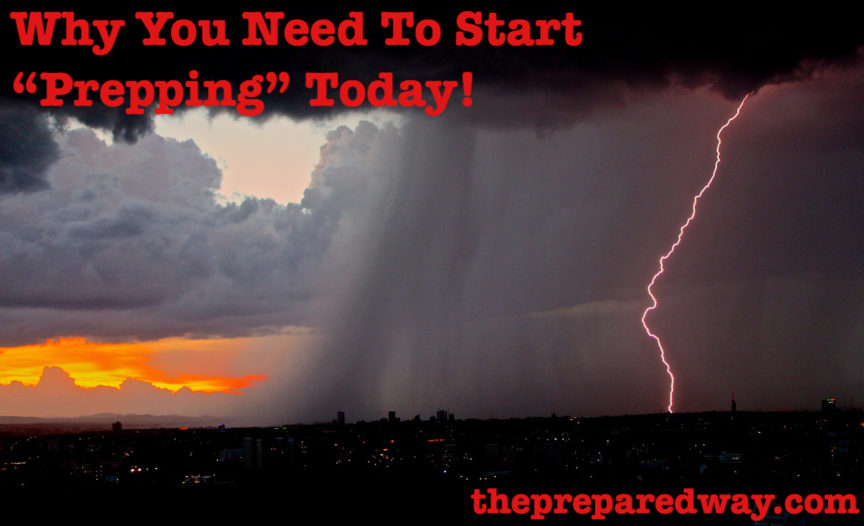In today’s age, we have it pretty good. We have everything we could ever want right at our fingertips. Food, clothing, and entertainment, all from our computer or phone. We order food from our phone and it shows up at our door, we buy clothes with a single push of a button on Amazon and they show up at our door, we have it better right now than any other time in history.
So, why should you start prepping today? The answer is easy, after gaining an understanding of the many different systems and systems of systems that make modern life possible, you will quickly see how dependent on electricity every aspect of modern life is. Take away electricity and the house of cards falls.
For many many years, the prepping community has talked about the many different reasons why you should be prepared for unexpected emergencies, but have always been met with pushback by those who do not see things that way. Many people count on emergency services to help them in an emergency situation. What happens when emergency services can’t respond or don’t even know about your specific emergency?
The NIAC Report
In 2018, the National Infrastructure Advisory Council released its annual report to the Department of Homeland Security. In 2018 the council’s focus was on catastrophic power outages and the effects of this type of event on the local, state, and federal levels. Within this report was a section that caught my attention and the attention of many who try to be prepared of the unknown, it specifically recognizes the lack of preparedness of most Americans. Americans are not the only ones who are not prepared, most first world countries are at risk as well.
“People no longer keep enough essentials within their homes, reducing their ability to sustain themselves during an extended, prolonged outage. We need to improve individual preparedness.
– Most preparedness campaigns call for citizens to be prepared for 72 hours in an emergency, but the new emerging standard is 14 days.
– For example, Washington, Oregon, and Hawaii have a standard that individuals have enough food and water to support themselves for 14 days. These efforts could serve as a model for federal and state preparedness resources, campaigns, and training.
– The idea of individual preparedness is not a new concept. Civil defense, an older term used to elevate a level of individual preparedness and activate communities, used to be more widely accepted.”
National Infrastructure Advisory Council 2018 Report (Pg. 14)
Even the NIAC understands that Americans are underprepared, and the fact that they recommend that a campaign of education about preparedness be undertaken, this should be a wakeup call about the importance of general preparedness for all Americans. If all Americans are individually prepared, then more of the local, state and federal time and energy can be put into restoring public services, instead of trying to help the populace.
“Prepping”
Unfortunately, “prepping” has gotten a bad rap since the end of the cold war. During the cold war, it was your civic duty to be prepared. Many of us today have never had to deal with the day to day
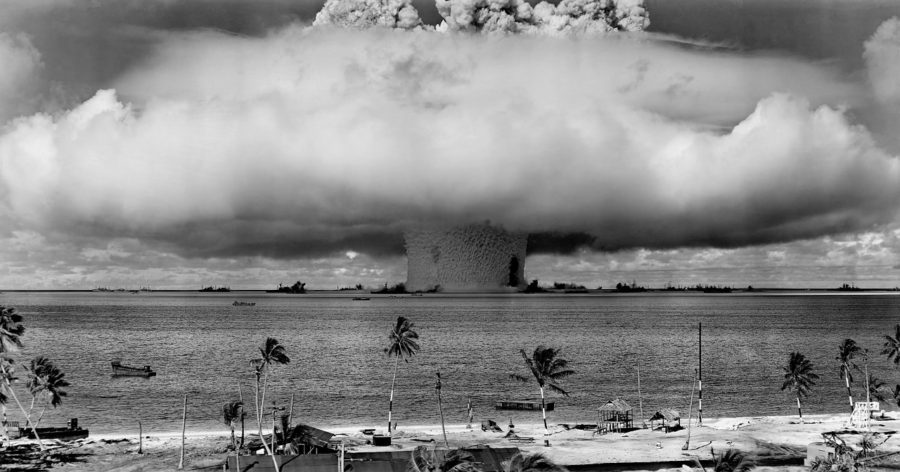
During the cold war, many lived day to day, not knowing if they were going to have to endure a nuclear attack. The previous generation lived with financial and agricultural uncertainty, after having lived through the stock market crash 1929, the Dust Bowl of the 1930s and the Great Depression that followed. For the generations before that, preparedness was just a way of life.
Our Generation’s Biggest Threat
So what is the most pressing threat to our generation? That’s easy, our dependence on electricity. Even a power outage that is only a couple of hours, is at best a major inconvenience and at worst life-threatening. Almost every aspect of modern life has some dependence on electricity. So, in the event of a catastrophic power outage, life as we know it would come to an abrupt stop. So what is a catastrophic power outage? The NIAC defines it best.
What is a catastrophic power outage?
• Events beyond modern experience that exhaust or exceed mutual aid capabilities
• Likely to be no-notice or limited-notice events that could be complicated by a cyber-physical attack
• Long duration, lasting several weeks to months due to physical infrastructure damage
• Affects a broad geographic area, covering multiple states or regions and affecting tens of millions of people
• Causes severe cascading impacts that force critical sectors—drinking water and wastewater systems, communications, transportation, healthcare, and financial services—to operate in a degraded state
National Infrastructure Advisory Council 2018 Report (Pg. 3)

So how is something like this even possible? The complexity of the systems that are required to make modern life possible is perplexing. Another study of the effects of a long-term power outage could affect our modern collection of systems has this to say:
“The physical and social fabric of the United States is sustained by a system of systems; a complex and dynamic network of interlocking and interdependent infrastructures (“critical national infrastructures”) whose harmonious functioning enables the myriad actions, transactions, and information flow that undergird the orderly conduct of civil society in this country. The vulnerability of these infrastructures to threats — deliberate, accidental, and acts of nature — is the focus of greatly heightened concern in the current era,…..”
The EMP Commission Report – 2008
Back Up Systems
To boil this down into the simplest terms, our country’s power grid is like a machine, the more moving parts you have, the more things you have that can fail and one failure can cause other parts to become compromised and cause other failures. In the world of today, everything runs on electricity. Many critical systems have backup generators but these are generally for short-term outages last less than 72 hours. What happens when the power is out for weeks or even months in a large regional event?
Case Studies
There are numerous local and regional cases of power outages lasting for more than a day or two many of which caused problems in all areas of daily life including communications, restricting the access to safe food and water, and the ability to travel.
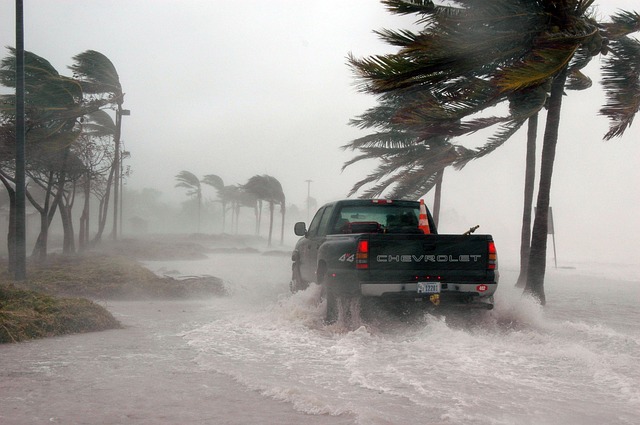
Over the last few decades, there have been many instances of major power outages. Many of which are hurricane related, but many smaller scale outages like ice and winter storms that cause power outages plus denial of emergency services have occurred.
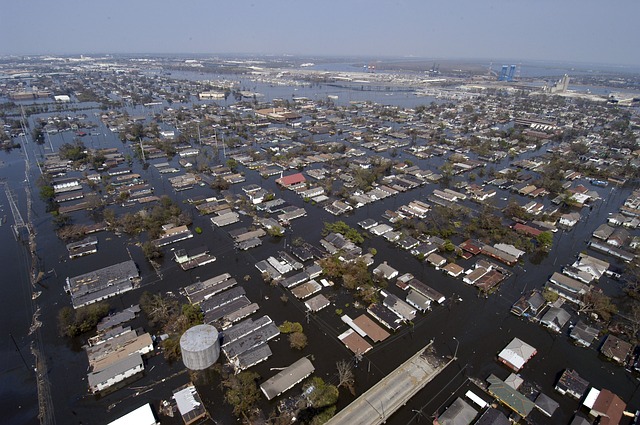
Hurricane Irma – September 2017
Hurricane Irma destroyed most of Puerto Rico including the entire power grid and paralyzed the island. Without outside assistance, the recovery process would have been nearly impossible.
Hurricane Katrina – August 2005
Many still remember the devastation and aftermath of Hurricane Katrina. New Orleans and coastal Louisiana experienced massive blackouts, flooding, denial of food and water services for weeks and in some places months.
Hurricane Lili – October 2002
Another hurricane that caused widespread power outages along the Louisiana coast. In this case power outages caused the near complete break down of the local food infrastructure. The lack of power made many stores unable to open and those that could were stripped of food and supplies within hours.
Ice Storms in 1998 and 1999
Hurricanes are not the only cause of wide spread power outages, major ice storms in the New England area and in Canada in 1998 and 1999 caused wide spread power outages, making refrigerated foods spoil and many unable to cook foods or heat their homes.
These are just a few examples of events that we can learn from, I could keep going and going with other examples but I think you get the point.
Modern Threats to Our Modern Way of Life
There are three basic threats to our electrical infrastructure; acts of nature, accidental, and deliberate. All three of these threats pose a very real danger to modern life.
ACTS OF NATURE: We already discussed some acts of nature. Every year all over the world there are ice storms, hurricanes, earthquakes, floods, and more. All have the potential of causing a break down in the electrical infrastructure.
ACCIDENTAL: When we discuss the loss of power across a large area you wouldn’t think it could be accidental but it can happen. One of the largest power outages in U.S. history was caused by a combination of human error and computer programing faults, so it can happen.
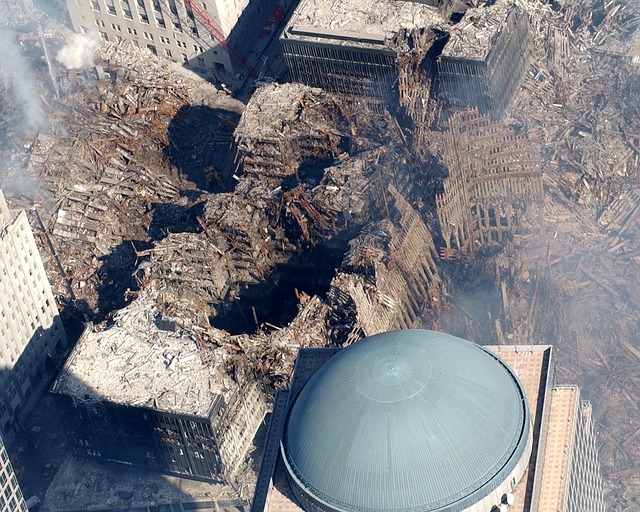
DELIBERATE: Terrorism – deliberate attacks on the power grid come in different forms. They can be a physical, cyber or from an electromagnetic pulse (EMP) weapon. Physical attacks have been carried out within the U.S., cyber attacks are harder to prove and the effects of an EMP weapon are, at this point theoretical, but there is enough scientific data to indicate it could cause serious widespread damage to not only electrical infrastructure but to many other electronic devices and electrical systems.
The Survival Rule of Threes
When it comes to basic wilderness survival you will often hear about the Rule of Threes. They are as follows:
- 3 Minutes without Air
- 3 Hours without Shelter (in severe conditions)
- 3 Days without Water
- 3 Weeks without Food
Why is this important? Because these rules still apply whether or not you are in the wilderness. Basic human needs do not change just because you are in an urban environment. As I have covered before, the loss of electricity can stop furnaces, water pumps, and disrupt the food supply chain significantly, all things that are required for basic survival.
Final Thoughts
So what can we take away from all of this?
Electricity is our Achilles heel but there are many other situations to prepare for. Everything from a flat tire, medical emergency, house fire, to a home invasion. There are many things to prepare for, find yours and make a plan. New to preparedness and not sure where to start? Check out my article>>> Practical Prepping For Beginners – A No-Nonsense Quick Start Guide
“By failing to prepare, you are preparing to fail.”
– Benjamin Franklin

